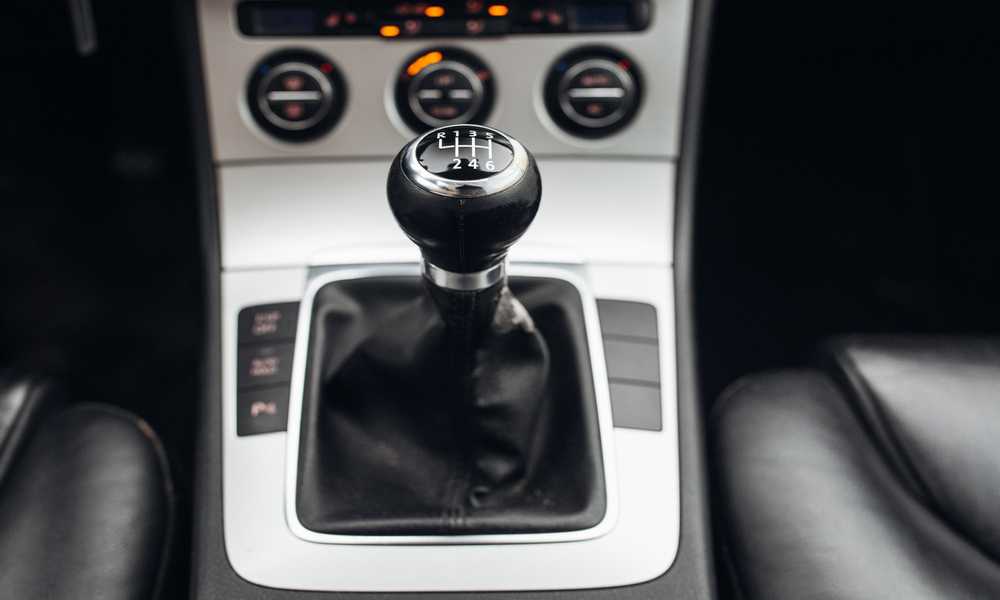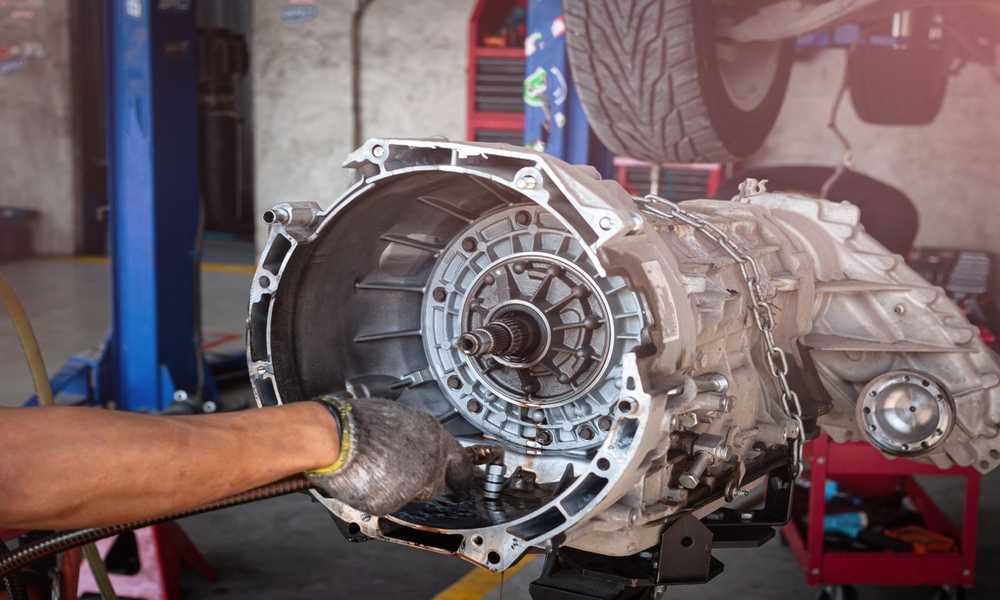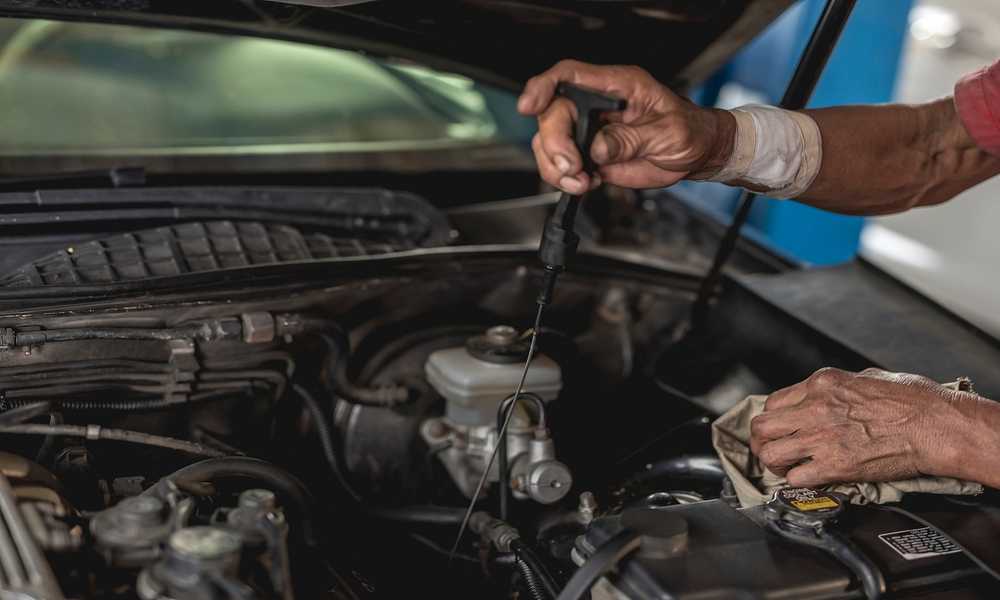Are you experiencing a jerky ride, strange noises or engine revving without acceleration? If so, your car might be suffering from transmission slipping. This problem can happen to both automatic and manual transmissions, and it can lead to costly repairs if left unaddressed. In this blog post, we will dive into what transmission slipping means and discuss the top 10 causes of this issue along with their solutions. We’ll also share some signs to look out for and answer the question on everyone’s minds: is it safe to drive what does transmission slipping mean? Keep reading to learn more!
What causes transmission slipping?
There are several reasons why your car’s transmission might start slipping. One of the most common causes is a low fluid level. Your transmission relies on fluid to operate properly, and if the level gets too low, it can cause problems like slipping.
Another possible culprit is a transmission fluid leak. If you notice reddish-brown spots under your car or a burning smell coming from your engine, this could be an indication of a leak.
Burnt or worn-out fluid can also lead to transmission slipping since old or contaminated oil doesn’t have the same lubricating qualities as fresh fluid.
Broken or worn-out transmission bands can also cause issues with shifting gears smoothly. Similarly, clutch problems in manual transmissions may make it difficult for you to shift gears entirely.
Worn-out gears that don’t mesh together correctly are another potential cause of slipping transmissions. Solenoid issues and torque converter malfunctions can also create similar problems.
Software mistakes in newer cars with electronically controlled systems may prevent proper communication between various components and result in erratic shifting patterns.
1.Low fluid level

One of the main causes of transmission slipping is a low fluid level. The transmission, like any other part in your car, requires proper lubrication to function correctly. When there’s not enough fluid in the system, it can cause issues with shifting and lead to slipping.
Low fluid levels could be due to leaks or even neglecting routine maintenance checks. It’s essential always to check your transmission fluid at regular intervals and keep an eye out for any signs of leakage.
If you notice that your vehicle is having trouble shifting gears or seems sluggish when accelerating, it may be time to check the transmission fluid level immediately. You can easily do this by locating the dipstick under the hood and checking if it falls within the recommended range on the stick.
It’s crucial never to continue driving with low transmission fluids as it could cause severe damage that could result in costly repairs. Make sure always to top up your fluids regularly and have any leaks fixed promptly by a qualified mechanic.
Low fluid levels are one of many reasons why transmissions slip. Always ensure you’re keeping an eye on your fluids’ health as they play a critical role in ensuring your vehicle functions optimally while reducing mechanical wear over time.
2.Transmission fluid leak
One common cause of transmission slipping is a fluid leak. Transmission fluid is responsible for lubricating and cooling the various components of your vehicle’s transmission, including gears, bearings, and clutch plates. When there’s a leak in the system, it can reduce the amount of fluid available to do its job properly.
Over time, this can lead to wear and tear on these critical parts which can result in slip or failure. In many cases, a simple visual inspection will reveal whether or not there’s a leak present. If you notice any signs of leakage such as puddles underneath your car or low levels when checking your dipstick then it’s crucial to address this issue immediately.
Ignoring leaks increases the risk of serious damage that could render your entire transmission useless meaning expensive repairs may be needed down the road. Once identified by an experienced mechanic they should be able to pinpoint where exactly along the line from pump to cooler radiator where this problem is occurring so that they may fix It promptly before further issues arise.
3.Burnt/worn out fluid
Burnt or worn-out transmission fluid can cause your transmission to slip. Transmission fluid is critical for lubricating the moving parts inside your transmission and keeping it cool. Over time, as you drive your vehicle and put wear on the components in your transmission, the fluid will break down.
When this happens, the fluid loses its effectiveness at lubricating and cooling, which can lead to slipping gears. Burnt or worn-out transmission fluid has a distinct burnt smell and often appears darker than new fluid.
If you notice these signs when checking your car’s fluids, it may be time for a flush and refill of the old burnt/worn out liquid with fresh new ones. It’s important not to ignore this issue because continuing to drive with bad fluids could lead to further damage in other parts of your car’s engine system.
To avoid such problems from occurring in future its recommended that drivers should check their car’s fluids regularly and change them according to manufacturer suggestions. This will keep their vehicles running smoothly without any issues related to burnt or worn-out transmissions fluids.
4.Broken or worn out transmission bands
Broken or worn out transmission bands are another common cause of transmission slipping. Transmission bands, also known as a band brake, are made up of steel rings that wrap around gears and control the shifting process. Over time, these bands can become worn or broken due to normal wear and tear.
When this happens, the gears may not be able to engage properly, leading to slipping and other issues with your vehicle’s transmission system. In some cases, you may notice that it takes longer than usual for your car to shift between gears or that there is a delay when accelerating.
To fix this issue, you will likely need to have the damaged transmission band replaced by a professional mechanic. This can involve removing and disassembling your vehicle’s entire transmission system in order to access the faulty part.
If you suspect that your car’s transmission bands are worn or broken, it is important to address the issue promptly before it causes further damage to your vehicle’s engine or drivetrain system. Be sure to take your car in for regular maintenance checks so that any potential issues can be caught early on before they turn into major problems down the road.
5.Clutch problems

Clutch problems can also be a cause of transmission slipping. The clutch is responsible for engaging and disengaging the engine from the transmission, allowing smooth gear changes while driving. A worn out or damaged clutch can lead to difficulty shifting gears, which in turn causes slipping.
One common problem with clutches is oil contamination. If there’s an oil leak near the clutch assembly, it can contaminate the lining and cause it to slip. Another issue could be a worn-out release bearing or pressure plate springs that don’t have enough tension left in them.
Another possible culprit is a misaligned clutch disc due to improper installation or wear on the splines. This issue leads to uneven contact between the flywheel and pressure plate, resulting in slippage when trying to engage gears.
Hydraulic problems within the clutch system such as low fluid levels or air bubbles within the lines can prevent proper engagement of gears leading to slipping issues. All these issues require immediate attention by a professional mechanic before significant damage occurs to your car’s transmission system.
6.Worn out gears
Worn out gears are a common cause of transmission slipping. Gears transmit power from the engine to the wheels, and wear and tear over time can lead to problems with shifting and acceleration.
Typically, worn-out gears occur in older vehicles or those that have been subjected to rough driving conditions. The metal on metal contact between the gear teeth causes them to become rounded off or chipped, leading to slipping when trying to shift into different gears.
In addition, worn-out bearings inside the transmission can also cause excessive play in the gears themselves, further contributing to slipping issues.
To fix this problem, a mechanic will need to inspect and replace any damaged gears or bearings within the transmission. It is important not to ignore these symptoms as continued use of a vehicle with worn out gears could lead to more severe damage down the road.
Regular maintenance such as fluid changes and inspections can help prevent premature wear on your vehicle’s transmission components including its gears – ultimately prolonging its lifespan.
7.Solenoid issue
Have you noticed that your car’s gears are slipping or shifting at the wrong time? It could be due to a solenoid issue. Solenoids are small electro-mechanical devices in the transmission that control the flow of fluid through the valve body. When they malfunction, it can cause problems with gear shifts and overall performance.
One common problem is when debris gets stuck in the solenoid, causing it to either stick open or closed. This can prevent proper fluid flow and lead to transmission slipping. Another issue may be an electrical problem, where a short circuit or broken wire prevents the solenoid from functioning correctly.
In some cases, replacing a faulty solenoid may fix the issue. However, if there are multiple solenoids affected or other underlying problems within the transmission system, more extensive repairs may be necessary.
If you suspect that your vehicle is experiencing issues related to a faulty solenoid, it’s important to have it diagnosed by a professional mechanic who specializes in transmissions. Ignoring these symptoms could result in further damage and costly repairs down the line.
8.Torque converter issue
One of the possible causes of transmission slipping is a problem with the torque converter. The torque converter plays an important role in transmitting power from the engine to the transmission, so any issues with it can lead to problems with shifting and acceleration.
If your torque converter is faulty, you may notice that your car struggles to accelerate or experiences delayed shifting when you step on the gas pedal. You may also hear strange noises coming from under the hood or feel vibrations while driving.
A common issue with torque converters is worn out components such as bearings, seals, and clutches. These parts can become damaged over time due to normal wear and tear or overheating caused by low fluid levels.
In some cases, replacing these worn out components may be enough to fix your torque converter issues. However, if there are more severe problems like damage to the stator or impeller fins, a complete replacement of the entire unit may be necessary.
If you suspect that your vehicle has a problem with its torque converter, it’s best to have it inspected by a professional mechanic who can diagnose and repair any underlying issues before they cause further damage.
9.Transmission bands

Transmission bands are a vital component of an automatic transmission system. These bands play a significant role in engaging and disengaging gears, which allows the vehicle to move smoothly.
Over time, these transmission bands can become worn out due to continuous use or lack of maintenance. When this happens, slipping gears may occur, resulting in reduced power and poor performance.
In some cases, replacing the faulty transmission band is enough to fix the issue. However, it’s essential to identify any underlying problems that may have caused the band failure in the first place. It could be because of low fluid levels or burnt/worn-out fluid that has contaminated other parts of your car’s engine.
If left unaddressed for too long, damaged transmission bands can ultimately lead to more severe problems like total transmission failure. Therefore regular inspection and maintenance are necessary measures for preventing potential damages from occurring.
If you suspect there might be an issue with your car’s transmission bands or if you’re experiencing signs of slipping gears such as delayed shifts or difficulty getting into gear; it’s best advised always seeking professional assistance immediately rather than waiting until things get worse before taking action.
10.Software mistakes
When it comes to the causes of transmission slipping, software mistakes may not be the first thing that comes to mind. However, in modern cars with electronic control modules (ECMs) and complex software systems, even a minor programming error can lead to serious transmission problems.
One common software mistake is related to shift timing. If the ECM is programmed incorrectly and sends signals too early or too late for gear changes, it can cause harsh shifting or slipping. Another issue related to software mistakes is incorrect calibration of clutch pressures which can result in slippage.
Software malfunctions can also affect the torque converter lockup feature causing slipping between gears or erratic shifting patterns. Additionally, some vehicles have adaptive learning algorithms that adjust shift points based on driving habits but if there are errors in this system then it could cause issues.
It’s important for car manufacturers and technicians to ensure proper programming and updates are done regularly as well as ensuring they use reliable diagnostic tools when trying to identify any potential software issues before replacing parts unnecessarily.
How to fix transmission slipping?
Fixing transmission slipping depends on the cause of the problem. Here are some solutions to common causes of transmission slipping:
1. Low fluid level: Check and refill the fluid if it is low or add a sealant that can fix minor leaks.
2. Transmission Fluid Leak: Fix the leak and replace any damaged parts before refilling with new fluid.
3. Burnt/Worn Out Fluid: Change the old, burnt out fluid with fresh, clean ATF as recommended by your vehicle’s manufacturer.
4. Broken or Worn Out Transmission Bands: This requires expert help from a mechanic who can repair or replace worn-out bands in your car’s automatic transmission system
5. Clutch Problems: For manual transmissions, examine the clutch plate for wear and tear and repair as needed.
6-10. Solenoid Issue, Torque Converter Issue, Software Mistakes, Worn Out Gears & Transmission Bands have their specific repairs depending on what’s causing them to malfunction.
It is important to note that fixing a slipping transmission may be costly but taking immediate action will save you more money in future repairs or replacement costs.
What does transmission slipping mean? : Explanation
Transmission slipping is a common problem faced by many car owners. It refers to the inability of the transmission system to engage or stay in gear, resulting in a noticeable loss of power and difficulty accelerating.
When your car’s transmission slips, it means that something is not working as it should be within the system. The most common cause of transmission slipping is low fluid levels. This can occur due to leaks or burns in the fluid line.
Another cause of slipping can be broken or worn-out bands inside the transmission case. These bands hold gears together and control their movement when shifting into different gears.
Clutch problems can also lead to slipping issues with manual transmissions while solenoid and torque converter issues are more likely culprits for automatics.
Identifying what causes your specific vehicle’s transmission slippage will require inspection from an experienced mechanic who knows how these systems work together.
Why is my transmission slipping?
If you’re experiencing transmission slipping, it’s crucial to understand why this is happening in the first place. There are several reasons that may cause your transmission to slip, and identifying the root cause can help you find a solution.
One of the most common causes of transmission slipping is low fluid level. Your car’s transmission relies on a specific amount of fluid to operate smoothly, so if there isn’t enough fluid present, it can’t work correctly.
Another possible reason for slipping is burnt or worn-out fluid. Over time, transmission fluid breaks down and loses its effectiveness. If left unchanged for too long, this can lead to wear and tear on your vehicle’s internal components.
A broken or worn-out transmission band can also be a culprit behind slipping issues. These bands serve as clamps around different parts of the gears in automatic transmissions – when they break or wear down over time, it affects how these gears function together.
Clutch problems could also be causing your vehicle’s issues with slipping gears – manual cars rely on clutch plates engaging with each other at exact moments during shifting cycles; any error here will result in gear slippage.
In summary – low fluids levels, burnt/worn out fluids/bands/clutches/gears/solenoids/torque converters/transmission software errors are all potential reasons behind why your vehicle’s transmission might be exhibiting signs of slippage.
Signs of transmission slipping to look out for
When it comes to your car’s transmission, recognizing the signs of slipping is crucial in order to prevent further damage. Here are some key indicators to look out for:
You may notice that your vehicle’s acceleration has become sluggish or delayed. This could be due to a lack of power reaching the wheels as a result of slipping gears.
Another sign can be difficulty shifting gears smoothly. If you experience sudden jerking, grinding noises or delays when changing gears, this can indicate issues with the transmission.
In addition, if you notice unusual smells – such as burning odors coming from under the hood – this should raise red flags. A burnt smell usually suggests overheating and potential damage within the transmission system.
Keep an eye on any warning lights that appear on your dashboard – most vehicles today have sensors built into their transmissions that will alert drivers if something is amiss. In short: pay attention to any changes in how your car drives and behaves!
Automatic transmission
Automatic transmission is a type of vehicle transmission that changes gears automatically, without the need for manual shifting. It uses hydraulic pressure to shift gears and can be found in most modern cars. Automatic transmissions come in different types such as traditional automatic, continuously variable (CVT), dual-clutch, and automated manual.
One advantage of automatic transmissions is their ease of use; drivers do not have to worry about manually shifting gears while driving. They also provide a smoother ride compared to manual transmissions since they don’t require gear changes that can cause jerking or stalling.
However, automatic transmissions are more complex than their manual counterparts and require more maintenance. Repairs can be costly due to the complexity of the system and specialized parts needed.
Whether you prefer an automatic or manual transmission depends on personal preference and driving needs.
Manual transmission
Manual transmissions are becoming less common in today’s cars, but they still have a devoted following among driving enthusiasts. Manual transmissions require the driver to manually shift gears using a clutch pedal and gear lever. The driver has more control over the car with a manual transmission, as they can choose exactly when to shift gears for optimal power and performance.
However, many drivers find manual transmissions difficult to learn, especially if they’re used to automatics. It takes practice and coordination to master shifting smoothly without stalling the engine or grinding the gears. Additionally, manual transmissions can be less efficient than their automatic counterparts because of their mechanical complexity.
Despite these challenges, many drivers prefer manual transmissions for their responsiveness and engagement with the driving experience. They may also be preferred for certain types of driving such as racing or off-roading where precise gear changes are necessary. While not as prevalent as they once were, manual transmissions continue to offer a unique and rewarding driving experience that is cherished by many enthusiasts.
Is it safe to drive a car when the transmission is slipping?

If you notice that your car’s transmission is slipping, it is important to address the issue as soon as possible. However, this raises an important question: Is it safe to continue driving when your transmission is slipping?
The answer depends on the severity of the problem. If your car only slips occasionally and does not affect its ability to accelerate or shift gears properly, then you may be able to drive for a short period without causing any significant damage.
However, if your car’s transmission is significantly slipping and affecting its performance, continuing to drive could cause further damage and potentially lead to costly repairs. It could also put yourself and other drivers at risk if sudden acceleration or deceleration occurs due to the slip.
It’s always best practice for safety reasons – if you notice any symptoms of a slipping transmission – have it inspected by a professional mechanic before continuing use of the vehicle.
Final thoughts
Transmission slipping is a common problem faced by many drivers. Ignoring this issue can lead to further damage and costly repairs. It’s important to keep an eye on the signs of transmission slipping and get it checked by a professional mechanic as soon as possible.
Regular maintenance such as changing the transmission fluid and keeping up with recommended service intervals can go a long way in preventing transmission problems from occurring.
It’s also important to remember that driving with a slipping transmission can be dangerous, especially in certain situations like steep inclines or heavy traffic. So, if you notice any symptoms of your car’s gears slipping, act quickly and get it inspected right away.
By following these tips and understanding what causes transmissions to slip along with their solutions, you’ll be better prepared to tackle this issue head-on should it arise. Stay safe on the road!



